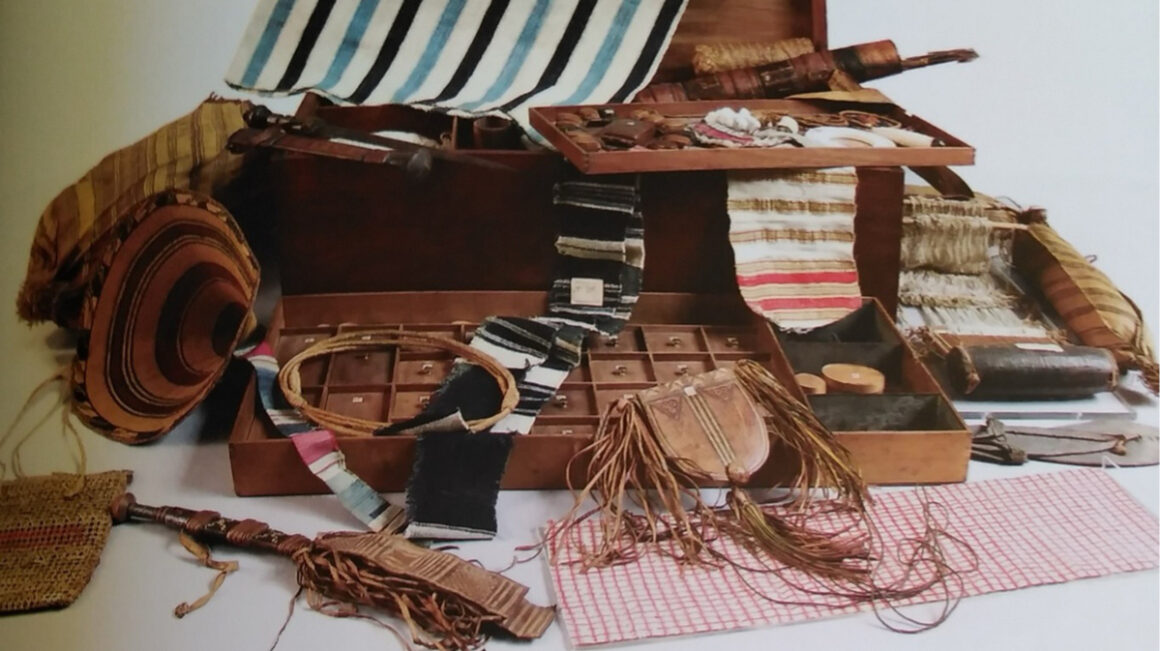

By Allison Balfour
This exhibition deals with the period from ca.1750-1850, and is comprised of a variety of materials: documents, books, objects, installation pieces, paintings, prints and sculpture. Most of the exhibits are historical, but there are also some striking examples of contemporary art by Black artists, including some imagined portraits of leading participants in the revolutionary struggle in Haiti, by Haitian artist François Cauvin, see below.
Described by revolutionary leader Dessalines as a “ferocious woman”, and by Haitian historian Thomas Madiou in 1847 as “ a woman of great beauty”, is an example of the bringing to light of almost forgotten historical figures in Black revolutionary uprisings.
Contemporary works in the exhibition include Karen McLean’s Ar’n’t I a Woman! Woven Bodies 1, 2021, 2 panels each 5.28m x 3m, handmade hessian pieces sewn together, hung from the ceiling in two huge “walls” and branded with images of Queen Nanny of the Maroons, and names of other enslaved women, along with images of wombs, fallopian tubes, and ovaries, decorated with cowrie shells.
Other works by Keith Piper, for example, testify to the ways in which enslaved Black people were classified by skin colour, and also ways in which the enslaved found hidden ways of retaliating eg. by spitting in their owners food, adding urine to dishes, as seen in the vitrine presenting Miss Mary’s Micro-Resistance Toolkit, 2007.
The exhibition focuses on Cambridge University (of which the Fitzwilliam museum is part), its income from proceeds of slavery, and also of the abolitionists who attended the university. Some of the contradictions regarding slavery at this time are also seen in the person of Selina, Countess of Huntingdon, whose portrait is in the show – a woman who was both a slaver and a funder of abolitionist causes. Toussaint L’Ouverture, a leader of the Black uprising in Haiti, was also a slave-owner, who later tried to rebuild the plantation economy with “free” forced labour. (book of the exhibition p137) . Henri Christophe, on becoming king, also used forced labour by former slaves to build his extravagant palace in Haiti.
Some white abolitionists eg. Thomas Clarkson (1760-1846) toured the UK with his Cabinet of Freedom, also in the show, which included products of African culture as well as whips and leg irons used in the slave trade. His aim was to abolish slavery by persuading people that trade with Africa and its products was the way forward.
When slavery was finally abolished the slave owners were paid compensation from public funds, the slaves received nothing. When Haiti eventually was beaten into submission by the French it had to pay reparations calculated by an article in the New York Times in 2022 to have amounted to $115billion, paid until 1947. (p.136) This has no doubt had a devastating impact on Haiti in terms of poverty and health care etc.
The exhibition is particularly good in emphasising the role that women, both Black and white, played in uprisings and abolition of slavery, and I noticed that the Quaker Elizabeth Heyrick wrote a publication demanding immediate abolition of slavery and criticising William Wilberforce for being too cautious. He tried to undermine her efforts and silence her.
There is lots to learn from this exhibition and some really interesting artworks, and documentation. For example there is a transcript (ca.1772-9) of a song sung by enslaved men working on a plantation on Barbados. This is an exhibition well worth visiting, and taking time to absorb. I was impressed.
However I discovered when I read the book’s final two essays, both by Black female scholars and curators, Wanja Kimani and Temi Odumosu, were critical of the Fitzwilliam for not having done more. The former, in particular, seems to have felt unheard in her criticisms and suggestions for what more could and should be done. Given that we can only go by what is published here, I cannot decide if this is the case or not. Kimani cites examples of what she terms “white fragility”, specially on the part of white women who use tears as a weapon when confronted by evidence of racist practices and attitudes. This “white fragility” she suggests, is really an example of “white violence”. (p.187)
While obviously Black Africans were massively tortured, killed and worked to death by slavers and slave owners, it is not just a Black vs White issue. Black Africans sold Black slaves, Maroons were “persuaded” to return runaway slaves to their masters, rich white people benefitted, but this was all in the context of developing capitalism, and the search for profit. When slavery became less profitable, slave owners found a new way to benefit from abolishing it ie. by demanding compensation for themselves. Enslaved people who fought tooth and nail for their freedoms showed what power organised workers and oppressed people had and deserved so much better than they got. Black and white people alike should oppose racism wherever it is found. Members of museum associations and trade unions organising in the museums and galleries sector should ensure their own staff are listened to, and the lessons of history should be brought into the present. But this notion of “white fragility” doesn’t sound to me like a way to tackle racism and the unequal society we all exist in.